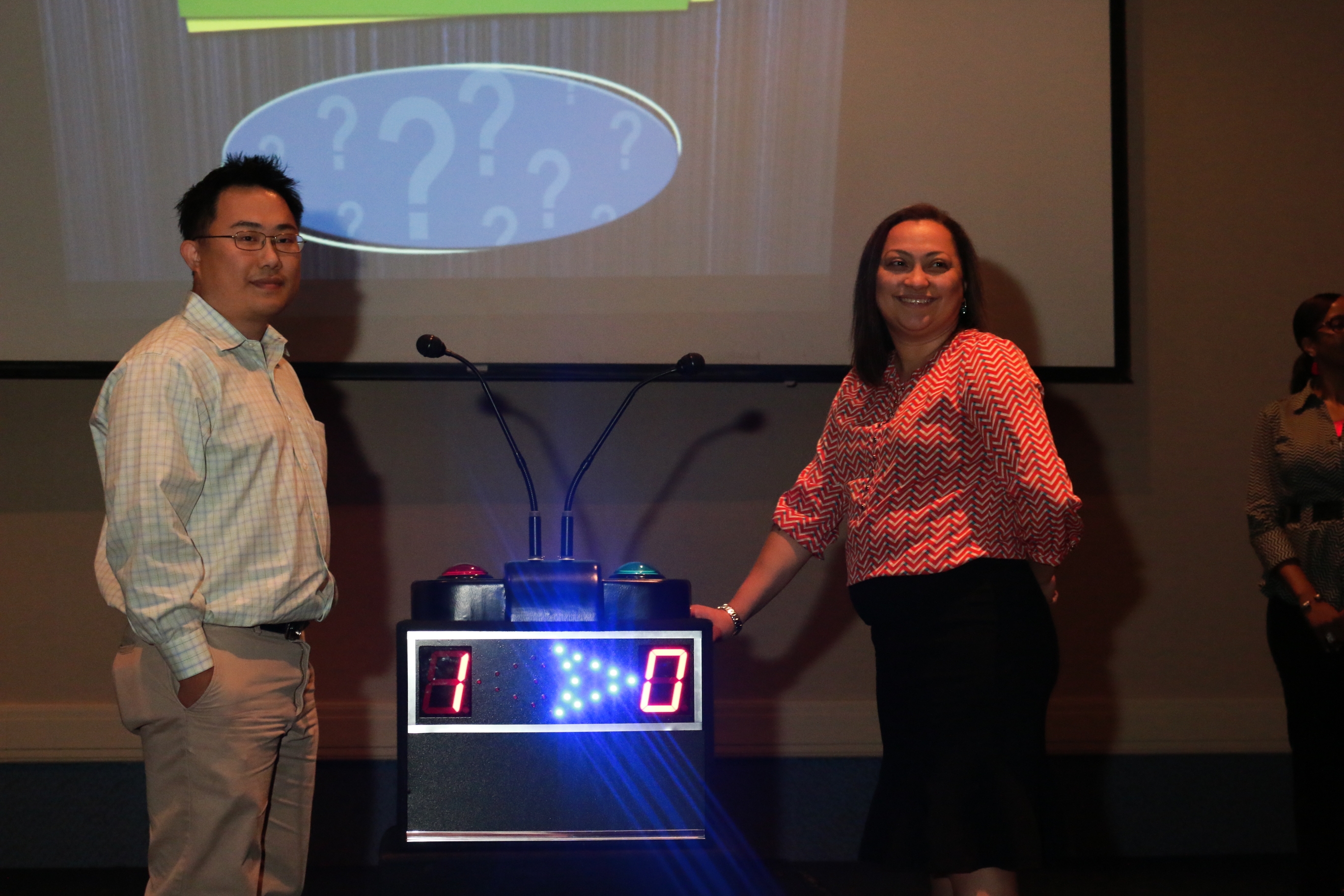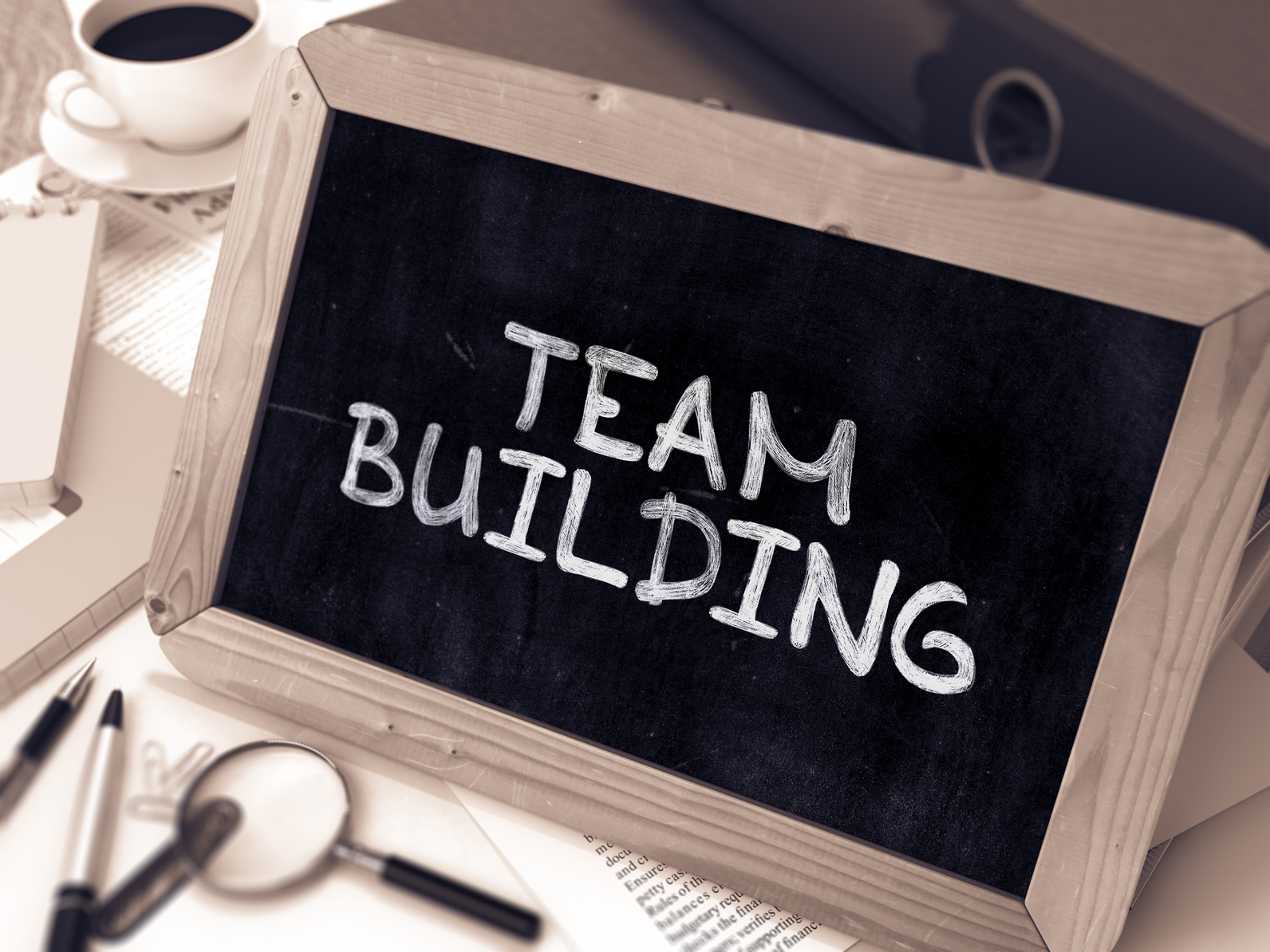In the realm of team building, the “Most Likely To” game stands out as a pivotal tool for nurturing a harmonious and efficient work setting.
This game, with its engaging and jovial nature, serves as an ideal icebreaker, promoting camaraderie among colleagues.
Beyond the laughter and light-heartedness, it unveils intriguing aspects of each participant.
Let’s dive right into this guide as we explore the intricate world of “Most Likely To” questions, providing an extensive compilation and insights on harnessing their potential for robust team building.
Key Takeaways – “Most Likely To” Game
Fostering genuine connections among team members is more crucial than ever.
The “Most Likely To” game, when orchestrated with care and insight, emerges as a standout in the vast array of team-building exercises available.
It’s not just a game; it’s a whole experience or vibe as they say. They offer a blend of fun, introspection, and meaningful interactions, making them a favorite among team leads and HR professionals.
This activity seamlessly marries enjoyment with profound introspection, paving the way for team members to understand, appreciate, and connect with each other on diverse planes.
By diligently following the guidelines and tips we’ve discussed, teams can elevate the experience, ensuring not just a successful game session but also one that leaves lasting memories.
Don’t let the opportunity to enhance team cohesion and morale pass you by.
Invest in your team’s future, creating an environment where everyone thrives together.
Reach out to our team-building experts today and let’s craft an unforgettable experience that your team will cherish for several years.
What Are “Most Likely To” Questions?
“Most Likely To” questions are hypothetical queries that predict certain behaviors or actions of individuals within a group.
They are often framed in a humorous or intriguing manner, prompting participants to nominate the person they believe fits the description best.
4 Categories and Examples of “Most Likely To” Questions
Professional Scenarios
1 – Who is most likely to give a captivating presentation without any preparation?
2 – Who is most likely to come to the rescue when technology fails during a meeting?
3 – Who is most likely to read and summarize a lengthy report in record time?
4 – Who is most likely to initiate a training session for a new software tool?
5 – Who is most likely to represent the team at a major industry conference?
Fun and Light-hearted
1 – Who is most likely to come to work in a costume on Halloween?
2 – Who is most likely to start a spontaneous dance-off during a team outing?
3 – Who is most likely to know all the latest pop culture references?
4 – Who is most likely to bring in a board game for a lunchtime challenge?
5 – Who is most likely to have the most colorful and vibrant workspace?
Personal Achievements
1 – Who is most likely to complete a challenging puzzle or brainteaser in no time?
2 – Who is most likely to take up painting or sketching and excel at it?
3 – Who is most likely to join a local theater group and star in a play?
4 – Who is most likely to set a personal fitness goal and achieve it within a month?
5 – Who is most likely to curate and host a themed event or party?
Adventurous Endeavors
1 – Who is most likely to embark on a cross-country road trip on a motorcycle?
2 – Who is most likely to join a mountaineering expedition to a challenging peak?
3 – Who is most likely to explore the depths of the ocean through deep-sea diving?
4 – Who is most likely to live in a foreign country for a year, immersing themselves in the local culture?
5 – Who is most likely to participate in an extreme sport, like white-water rafting or snowboarding?
Planning a Team Builder?
![]()
Book a live game show experience today!
Contact us for further details.
For Immediate assistance by text – 917-670-4689
No deposit required.
We plan and facilitate all activities.
Benefits of Using the “Most Likely To” Game in Team Building

Diverse Group of People Holding Text Team Building
1. Ice Breaker Questions for New Teams
Teams that are just forming or have new members, these questions can serve as excellent ice breakers.
They introduce a fun and light-hearted way for members to get to know each other, easing initial awkwardness and facilitating smoother interactions.
For example: “GreenTech Innovations,” a startup focusing on sustainable technologies, has just onboarded a mix of experienced professionals and fresh graduates.
The team is diverse, with members from different backgrounds and age groups. There’s palpable excitement but also a hint of nervousness in the air.
To initiate bonding, the HR manager, Alex, organizes a “Most Likely To” game session during the first team meeting.
The Questions are made to be fun and non-intrusive:
- “Who is most likely to have more than five plants at their home?”
- “Who is most likely to have tried an extreme sport?”
- “Who is most likely to have attended a music festival in the past year?”
As team members laugh at those questions, share stories, and make their guesses, the room’s initial tension dissipates.
By the end of the session, barriers are broken, and the team is chatting away, discussing shared interests and hobbies.
2. Strengthening Existing Bonds
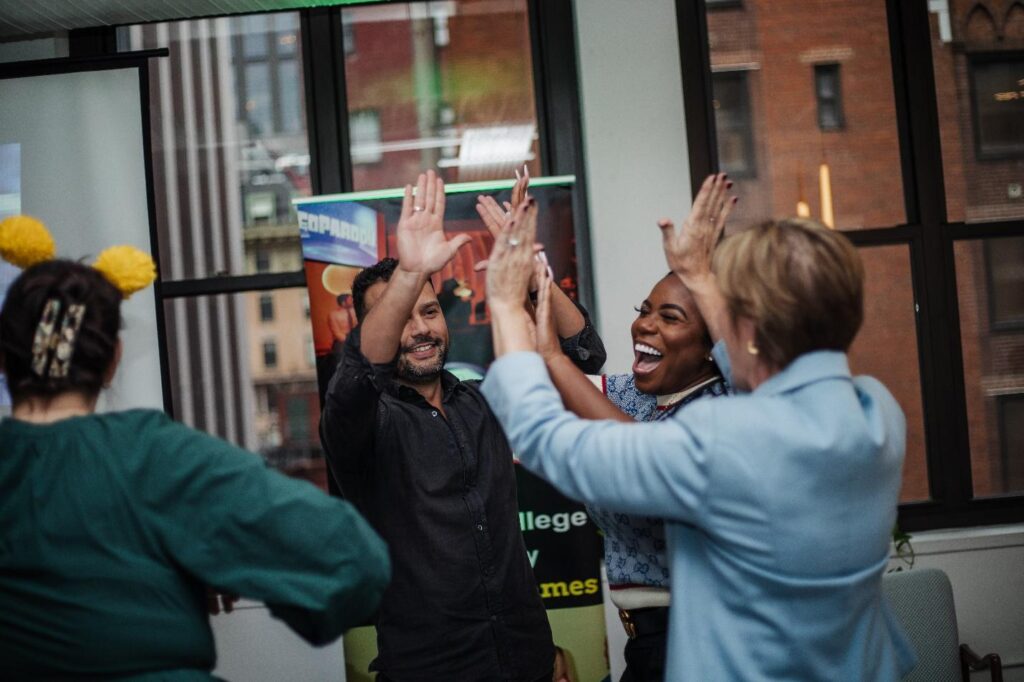
Strengthen Bonds
Established teams may use these questions to help in revisiting and strengthening existing bonds.
They can bring out previously unknown facets of team members, adding depth to relationships.
For example: “UrbanDesigns,” an architectural firm, has a close-knit team that has been working together for over five years.
While they have a strong working relationship, the daily grind and project deadlines have limited their interactions to mostly work-related topics.
To celebrate the firm’s anniversary, the team leader, Maya, decides to organize a “Most Likely To” game session during their team lunch.
She chooses questions that are slightly more personal, aiming to uncover new aspects of team members:
- “Who is most likely to have a secret talent we don’t know about?”
- “Who is most likely to have backpacked across a country?”
- “Who is most likely to have attended a silent meditation retreat?”
The game reveals surprising facts while the team discovers that Jake, their stoic project manager, is an excellent salsa dancer.
Lily, one of the junior architects, once backpacked across Thailand, while Raj, the usually talkative design head, attended a ten-day silent retreat.
These revelations lead to animated discussions, shared memories, and a promise to organize a salsa night for the team.
3. Promoting Open Communication
The informal nature of these questions encourages team members to open up and share more about themselves.
This can pave the way for better communication in professional scenarios as well.
4. Identifying Hidden Talents and Interests

Icebreakers
These questions can reveal hidden talents, interests, or experiences of team members.
Such revelations can be beneficial for managers and team leads in assigning roles and responsibilities that align with individual strengths and passions.
Let’s take Lisa, a project manager that works for a mid-sized ad agency. She is gears up for a major campaign pitch for a potential high-profile client.
The stakes are high and they’re looking to bring something fresh and innovative to the table.
So, she decides to organize a “Most Likely To” game session, but with a twist.
Instead of the usual fun questions, she curates a list that’s designed to uncover hidden talents and interests in her group.
Questions include:
- “Who is most likely to have a secret blog or podcast?”
- “Who is most likely to know how to play a unique musical instrument?”
- “Who is most likely to have tried their hand at stand-up comedy?”
As the game progresses, the team is in for multiple surprises.
They discover that James, a junior graphic designer, has a podcast about world cultures.
Sarah, from the copywriting team, plays the theremin, a rare musical instrument.
And Tom, one of the account managers, once did stand-up comedy during college.
5. Enhancing Team Morale
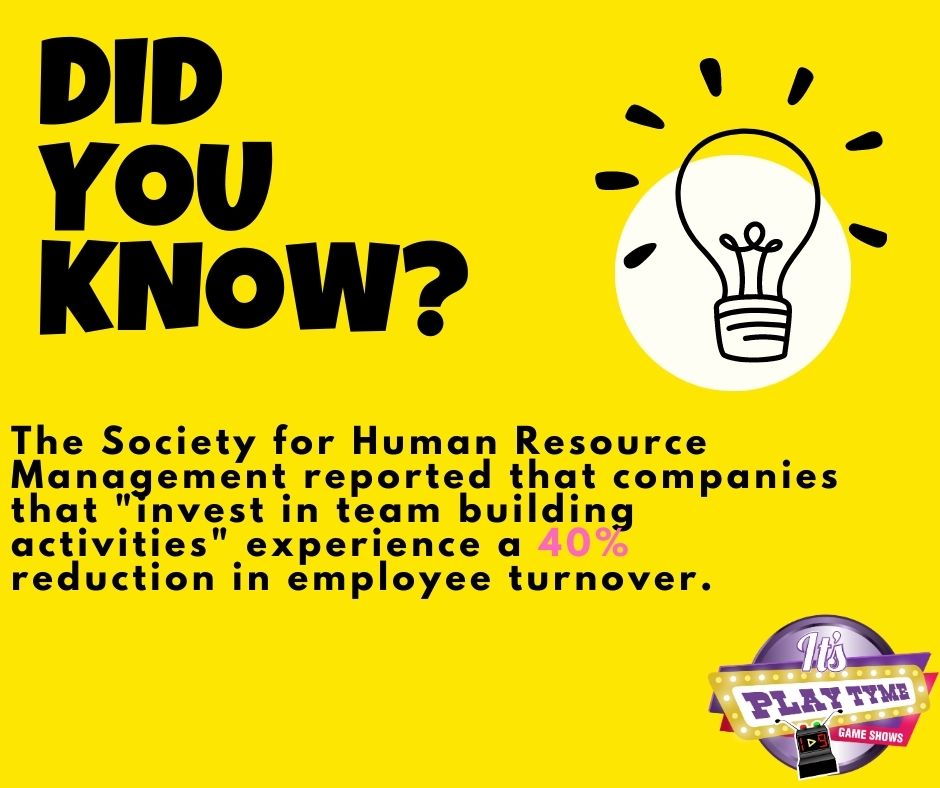
Employee turnover
The fun and camaraderie that come with this game can uplift the team’s spirits.
It can serve as a refreshing break from routine tasks, especially during stressful periods or intensive projects.
For example, the “most likely to” game kicks off with light-hearted questions like:
- “Who is most likely to accidentally mute themselves during a virtual meeting?”
- “Who is most likely to bring donuts for everyone on a rainy day?”
As team members laugh, share anecdotes, and vote for their colleagues, the atmosphere becomes more relaxed and jovial.
6. Encouraging Inclusivity
By ensuring that everyone gets a chance to ask a question or be the subject of one, the game promotes inclusivity.
It ensures that even quieter members feel involved and valued.
7. Facilitating Feedback in a Non-Threatening Manner
Some questions can be framed to gather feedback or insights in a non-direct, non-threatening manner.
Some examples are:
Who is most likely to come up with a solution to our current project challenge?
Who is most likely to have a fresh perspective on the client’s feedback?
Who is most likely to suggest a new tool or software that could streamline our workflow?
Who is most likely to identify a potential roadblock in our current strategy?
These questions are designed to open the floor for feedback and insights without putting anyone on the spot, fostering a culture of open communication and continuous improvement.
8. Customization for Specific Objectives
The questions can be tailored to align with specific team-building objectives.
For instance, if the goal is to promote innovation, questions like “Who is most likely to invent a game-changing product?” can be introduced.
Picture this, “FutureTech Labs,” a tech startup, is gearing up for its annual team retreat. The primary objective of this retreat is to foster a culture of sustainability and environmental consciousness within the team.
The company believes that integrating these values can lead to the development of more eco-friendly products and solutions.
To align with the retreat’s objective, the HR team curates a set of “Most Likely To” questions tailored to promote environmental awareness and sustainable thinking.
Some of the questions include:
- “Who is most likely to come up with a tech solution to reduce carbon emissions?”
- “Who is most likely to initiate a ‘green’ office challenge?”
- “Who is most likely to have ideas for eco-friendly packaging for our products?”
- “Who is most likely to suggest partnerships with environmental NGOs or initiatives?”
- “Who is most likely to have attended a workshop or seminar on sustainability in the past year?”
As the game unfolds, team members share their experiences, ideas, and aspirations related to sustainability.
It sparks discussions on potential green initiatives, eco-friendly product ideas, and ways the company can contribute to environmental causes.
Conclusion:
9. Building a Culture of Appreciation
These questions often lead to positive nominations, where team members appreciate and acknowledge each other’s strengths and qualities.
This can foster a culture of mutual respect and appreciation.
10. Facilitating Inter-Departmental Bonding
When used in larger group settings involving multiple departments, these questions can break departmental silos and encourage bonding across different functional teams.
Tips for Conducting the “Most Likely To” Game
- Maintain Respect: Ensure that all questions are respectful and do not target or alienate any individual.
- Diverse Categories: Use a mix of professional and personal questions to keep the game balanced.
- Encourage Participation: Make sure everyone gets a chance to ask a question or be the subject of one.
- Keep it Light: The primary goal is to have fun and bond, so avoid overly serious or controversial topics.
(FAQs) – “Most Likely To” Game

frequently asked questions
1. What is the “Most Likely To” game?
The “Most Likely To” game is a team-building exercise where participants pose hypothetical questions predicting certain behaviors or actions of individuals within a group.
Team members then nominate or vote for the person they believe fits the description best.
2. Why is it important to maintain respect during the “most likely to” game?
Maintaining respect ensures that the game remains a positive experience for everyone.
It’s essential to avoid questions that might touch on personal, racial, religious, or gender biases to prevent making participants uncomfortable and to uphold the essence of team building.
3. How can I ensure diverse categories in the game?
To ensure diversity, strike a balance between light-hearted, personal, and work-related questions.
This mix caters to diverse personalities within the team and keeps the game engaging for everyone.
4. Some team members are more reserved. How can I encourage their participation?
To foster inclusivity, ensure that quieter team members are also given opportunities to ask questions or be the subject of them.
Rotating the roles of the question-asker and the answerer can also help in involving everyone.
5. What’s the primary goal of the “Most Likely To” game?
The primary objective or goal of the game is to bond, have fun, let loose.
While it allows for introspection and understanding of team members, the core purpose remains to create camaraderie and strengthen team dynamics in a nutshell.
6. Are there any topics that should be avoided?
Yes, it’s advisable to steer clear of overly serious, controversial, or sensitive topics.
Before starting the game, setting some ground rules about off-limits topics can prevent potential discomfort or disagreements.
7. How does the “Most Likely To” game benefit team building?
The game not only serves as a fun activity but also plays a pivotal role in strengthening team dynamics.
It promotes open communication, mutual respect, and camaraderie, making it a valuable tool for team-building exercises.
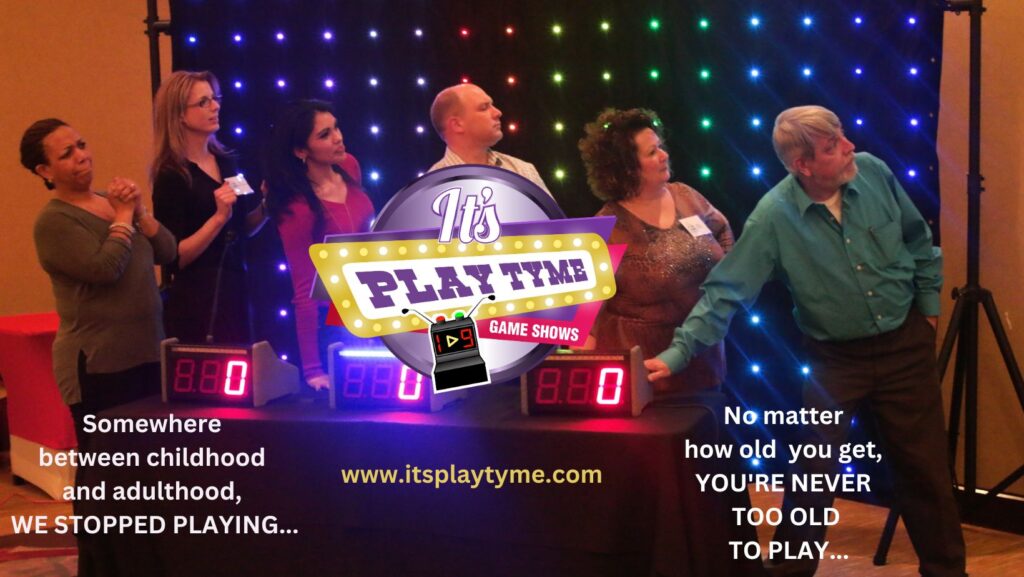
team-building-games


